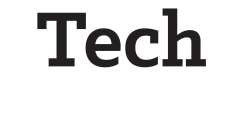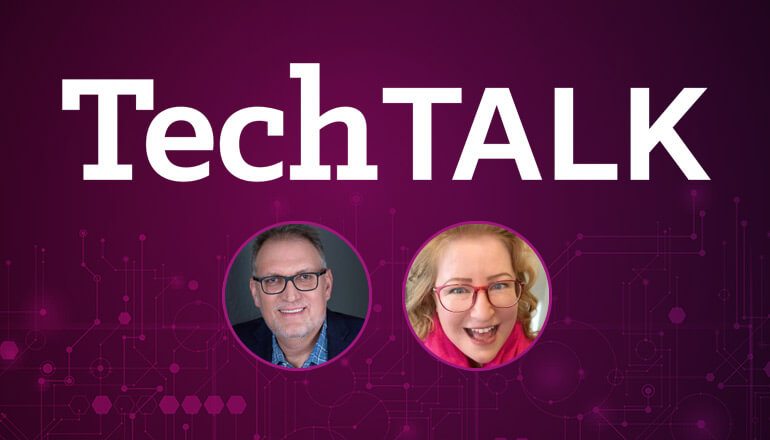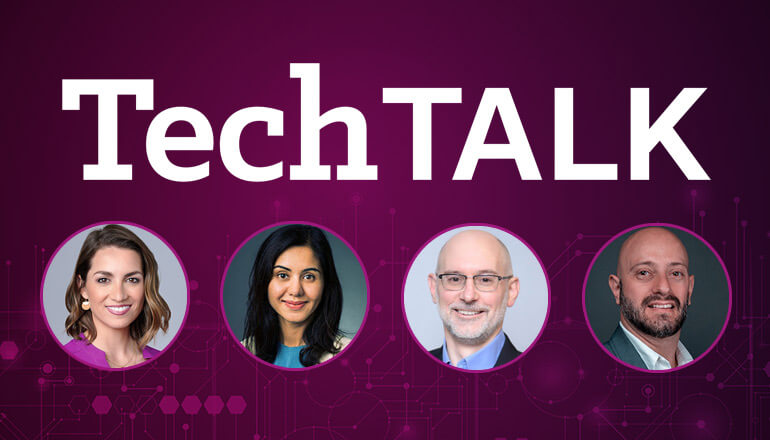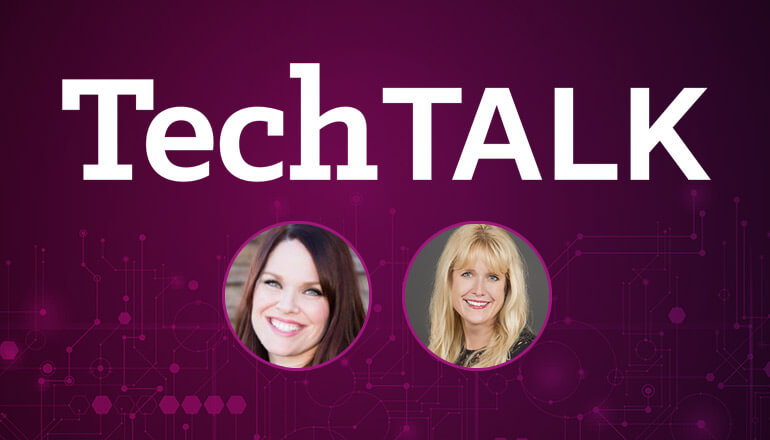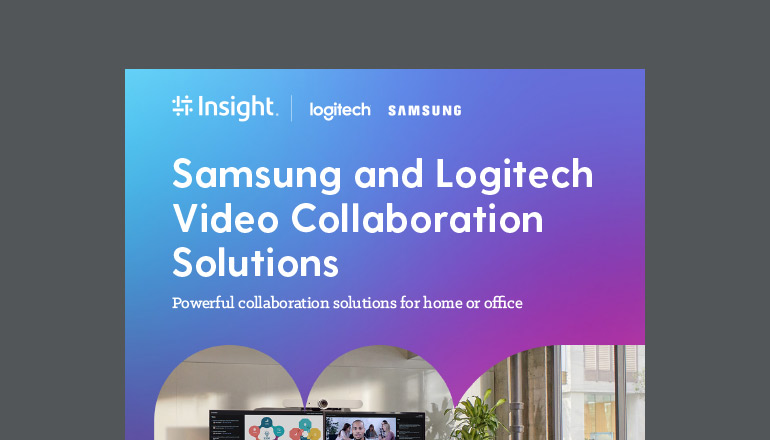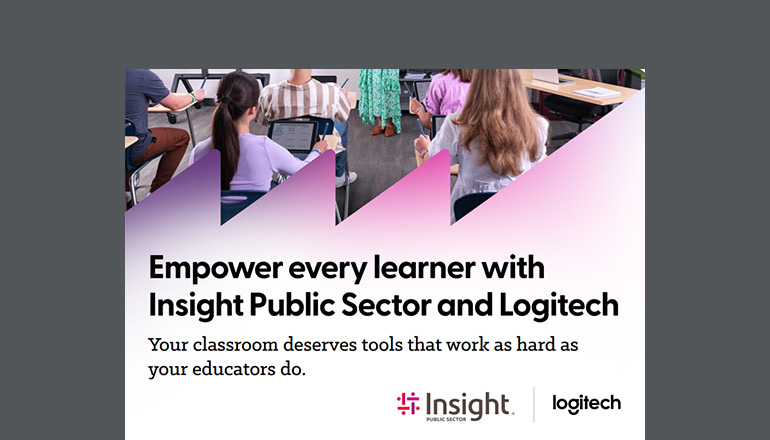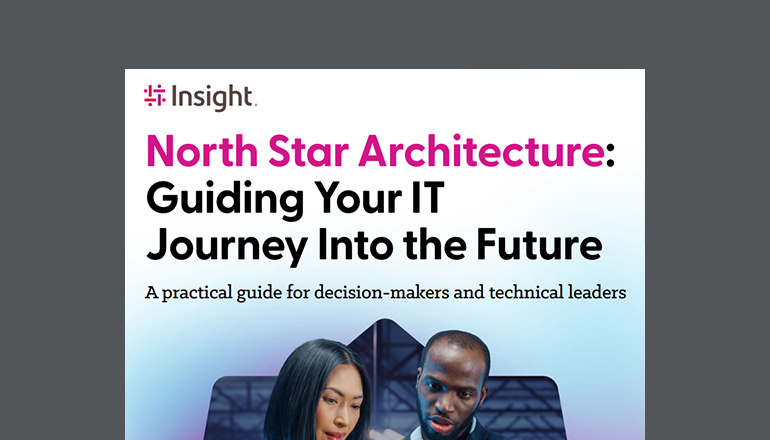Audio transcript:
Quick Tips for Optimizing the Device Lifecycle
Published August 4, 2020
[Music]
DAN
Hello everyone, thanks for joining us for this edition of TechTalk. I'm Dan Schneider, I'm part of the Insight Connected Workforce team, responsible for workplace services. And today we wanna to talk about getting the basics right by improving cost and end user experience for the life cycle. And we're gonna talk about how we can do that through optimization and modernization. But before we begin, I'd like to introduce Larry Sellers. Larry, could you tell us what you do at Insight?
LARRY
Sure, Dan, thanks so much. As you mentioned, we're part of the connected workforce team for workplace services portfolio. You and I have been together for about 13 years now, working on a variety of very complex life cycle projects involve multiple types of device types, not just laptops and desktops, been in the industry for about 33 years. And I'm looking forward to having this conversation with you.
DAN
Well, thanks for that, Larry and for joining us today. I know in your role for Insight, you do a lot of research in the industry, and you look a lot at the client surveys that were done in the first half of 2020. What have you seen be dominant themes that have come out in those surveys?
LARRY
Really, the surveys seem to be unanimous between the workflow flexibility and cost controls. Really, those are the highest priorities for many organizations today. And it's really a matter of addressing now as well as planning for the future. And now is really, as we move through these interesting times, probably the most prominent time to address. So, Dan, I know that you also, looked through many panelists publications, I'm just wondering what you've seen as well.
DAN
Well, we've been looking at that customer key metric data a lot that customers report into peer groups such as Gardener. And when you look at support costs for lifecycle proceed over the last five years, those costs have been relatively flat. And we know that people have been very aggressive about bidding out hardware and software contracts. So many people are wondering why haven't those financial metrics changed?
LARRY
Yeah, I think really what it comes down to is that lifecycle is so complex now, when you look at the mix of technology and also the workflow of the users, that the complexity is not aggressively addressed, cost is gonna be driven into the model versus removed. Then, based upon your experience, what has been your findings?
DAN
Well, you're pointing out a real key consideration, Larry, because we definitely have more complexity in the mix and type of devices and we also see that in the software that we're using. And so that's complexity has caused the amount of labor to increase throughout the life cycle support process. So if we don't do something to optimize or modernize our processes and technology and pivot to the future, we're not going to be able to reduce labor costs and touch times. And because IT salaries are inclining and not declining, you could very well see the cost per seat increase. And Larry, that really makes me want to ask you a question, in the client counts, where you've been consulting over the years and developing new strategies, what are some of the obvious inefficiencies that you've seen that have come to the surface?
LARRY
Well, what we've really encountered is, in all the types of systems that we worked with, as I mentioned before, commercial devices, backyard office endpoints, kiosks and things of that nature, but really to achieve scale and being able to get to quick deployments and actually reduce the cost, we found that a lot of times a lot of scrutinization needs to go into pre-deployment as well as the field handle times, really it's the labor and the touch time that has to be addressed.
DAN
Yeah, when you work on a commercial project like that, that really comes to the surface, and I agree when I look at pre-staging and then I look at what happens in the field, very long-time stamps. And it's because there's a lack of automation and also because we haven't optimized what we're using, and we haven't incorporated new modern approaches. And I've been involved with some use cases where, when we were able to accomplish that, we can reduce as much as 40% of the timestamp involved, which obviously has a big impact on labor, but we're also achieving better end user experience. Saving money and getting better end user experience usually don't go hand in hand.
LARRY
Yeah, well Dan, just like you said, at the beginning of this TechTalk, we've coined our approach, is getting the basics right. It's so critically important to achieving transformation. An example, most employees dread the process of going through a refresh because it disrupts our work life and it feel as if they're starting over again. Remote workers really feel a lot more of this pain, if not planned accordingly. What seems to really be missing is that they don't have the consumer experience. Like when you get a cell phone replaced and your persona just goes from one device to the next as well as your data.
DAN
Yeah, that consumer experience that we have in the mobility industry, you look forward to an upgrade of new technology, but that's not the case in the enterprise, but we can achieve that for the enterprise and we can do that very quickly because as you mentioned, we can automate the movement of that persona. And persona is not just data. Most people have data in the cloud, but what about all your wireless networks based on where you live and work, your printer settings, your browser favorites, your shortcuts, application settings, everything that makes that device look lived in by you, that's your persona. And so if we're able to automate that and move it, we increase the user experience, but we also reduce the amount of time spent in the field or time that shows up at the service desk.
LARRY
Yeah, you're right, Dan. And when we demonstrate that that's simple adjustments to a process, just a low hanging fruit of a persona, and then coupling with migration optimization technology, as well as a modern endpoint management platform, those are just so simple key areas to start that really produce ROI right out of the gate.
DAN
Yeah, and it's very achievable with low risk, just getting those basic simple steps right. When we talk about configuration provisioning and then automating and modernizing what we're doing, it's a great place to start and it's really important now because a large percentage of the workforce as you know, is moving remote and that may be a permanent situation. So, the hybrid workforce is really accelerating change in this area right now.
LARRY
Yeah, the hybrid workforce has to be low to zero touch process, it's critically important. But also, in the commercial use cases, when you're deploying new technology to replace manual or paper processes, and either it's vital to get the basics right, not overlook the foundational elements. As you know our approach is proven will address scalability and cost containments of digital transformation efforts, no matter what. Dan, this leads me to another observation after working with some of our largest customers. The key to attaining tangible results right at the beginning is to benchmark where you are today, to understand the opportunities for improvement and then create a roadmap to the future.
DAN
Yeah, I agree. And that is something that you can do very quickly. You can baseline your company costs and metrics against your peer group. You can look at what would that look like if I optimized what I had or if I moved to modern platforms. So many times, we're waiting for this long, complicated assessment process that often doesn't produce results or go anywhere, but now we make it very simple. We just look at these basic key metrics and then we know whether we have a compelling business case to move forward.
LARRY
Absolutely, no matter what an organization's position is, benchmarking is key to success of the whole engagement as well as seeing that our ROI right away, as I mentioned before. Most importantly, we want to establish the consumer type of experience for the corporate end users. This is what we all want.
DAN
Yeah, very well said. We want that consumer type of experience. And I think partnership here is really important because you do wanna develop a long-term roadmap, you wanna get the basics right, you want to optimize and modernize, lower your cost and improve experience, but then there's other transformation that you wanna do with your managed systems and being able to provide a roadmap to pivot, ultimately to manage services that have a predictable cost structure. And that's important because through this journey, you're reducing the variability and you're normalizing the platforms and process so that you truly can consume a managed service and know what to expect from a cost standpoint. And that is true service transformation.
And that's what Insight has built a model to help our customers achieve very quickly. Well, I wanna thank everyone today for listening to this version of TechTalk. And I want you to know that we're here to help you start your transformation journey. Thanks for your time. And Larry, thank you for being here. Have a great day.
LARRY
Hey, you too, Dan. Thanks everybody.
[Music]
